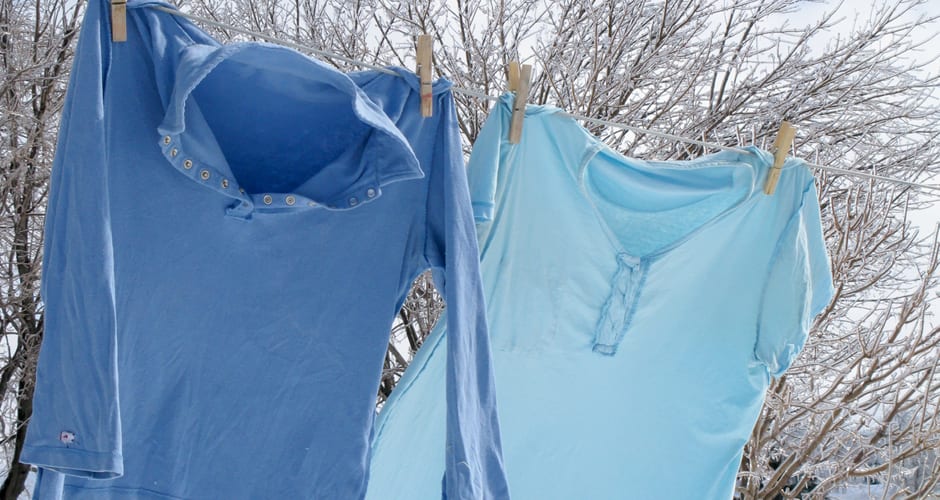When we imagine drying clothes outdoors, we think of items swaying in a gentle breeze under the summer sun. But what about winter line drying? Drying clothes outside in the winter months is possible. Air drying in the cold weather just takes a little time and patience. Here’s how you can connect with nature to get that outdoor-fresh laundry experience year-round.
Line Drying Works for Three Reasons: Time, Temperature, Moisture
When it comes to drying your clothes, there are three elements that get the job done: time, temperature and moisture. This holds true in a tumble dryer or on a clothesline, in summer and in winter. More heat and less moisture equal less dry time.
When drying your clothes outdoors in the winter, you’ll need more time because there is less heat. Hang clothes out as early as you can to take advantage of longer dry times. And, consider the weather. You wouldn’t hang clothes out to dry in a summer rainstorm, so avoid damp winter days, too. The best winter days for outdoor drying may be cold but they’re also dry, sunny and breezy.
Natural Bleaching and Deodorizing
Outdoor drying takes advantage of nature’s unique deodorizing and stain-fighting powers. The sun and fresh air do more than dry, they continue to clean your clothes. Direct sunlight helps naturally bleach and disinfect laundry – removing visible and invisible dirt and bacteria. This is particularly helpful for white clothing, bedding and towels. Dark-colored fabrics can fade after repeated exposure to sunlight, so keep those in the shade when possible and take advantage of winter’s less intense sunlight.
The Power of “Fluffing”
Those jeans you hung out turn into stiff denim icicles. Are they really dry? Yes! Drying on a line in winter is actually a form of freeze-drying thanks to sublimation – or ice evaporating from a solid state. Wet clothing may freeze, but the moisture evaporates into water vapor leaving behind dry clothing that just needs a little loosening.
You can manually soften your dried clothes by giving them a shake to loosen the fibers. Or, if you have a tumble dryer, give them a 5-minute spin.
Watch Out for Extreme Weather
There are cases when outdoor line drying is not in your best interest. Some fabrics, especially anything lined with plastic like some cloth diapers, should not be exposed to extreme temperatures to avoid cracking. And avoid snow or rain. In those cases, if you prefer line drying, the best solution is indoor rack drying or waiting for a drier day to do the laundry.
With some patience and a little know-how, drying clothes outside in winter is within reach. The next time the sun shines bright this winter, take a page from Grandma’s laundry play book and let Mother Nature do most of the work.


